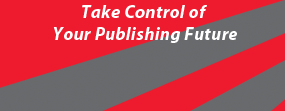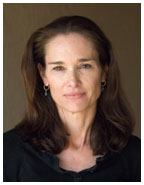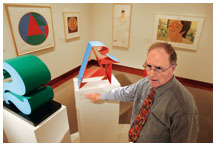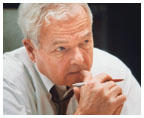July 18, 2007: Books and Arts
Searching for meaning
Bob Abernethy ’49 *52 talks to people about faith and doubt
For a complete list of books received, click here.
Margaret Bradham Thornton ’81 spent a decade organizing and tracking down the opaque references in Tennessee Williams’ notebook entries. (courtesy Margaret Bradham Thornton ’81) |
Reading
Room
A
playwright’s diaries
Margaret Bradham Thornton ’81 edited Tennessee Williams’
notebooks
By Iris Blasi ’03
In 1996, a box arrived on Margaret Bradham Thornton ’81’s doorstep containing the notebooks of Tennessee Williams. It was sent by John Eastman, a friend of her husband’s and the executor of Williams’ estate. Eastman wanted Thornton, an independent scholar and writer in Bedminster, N.J., to see if they might be publishable.
“It was a complete mess,” Thornton says of the box containing diaries of the playwright famous for A Streetcar Named Desire and Cat on a Hot Tin Roof. “Most of the [entries] weren’t dated, or were partially dated. I could barely read his handwriting in a lot of cases.” Plus, the copious diaries weren’t linear, as Williams would lose one, start another, then pick up in the first one when he found it.
But Thornton could see an “amazing creative record” buried amid the chaos, so she began editing. A decade later, Thornton had compiled a book — Notebooks, by Tennessee Williams, published by Yale University Press in February 2007.
Reproductions of Williams’ notebooks occupy the left side of each page, with Thornton’s abundant annotations — necessary to navigate the opaque references in the text — on the right. Williams was prolific, maintaining his diaries from 1936 to 1958 and from 1979 to 1981 (increased writing output and escalating drug and alcohol abuse account for the missing years, Thornton says). Williams wrote about everything, from his mentally delicate sister (who had a lobotomy in 1943, and is believed to be the inspiration for The Glass Menagerie’s Laura) to theatrical disasters (1940’s Battle of Angels, an expensive flop, closed in two weeks), but often used less-specific allusions.
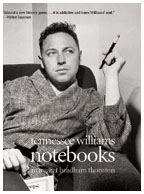 “He
would say ‘three manuscripts in the mail,’ and that’s
only interesting if you know what those manuscripts were,” Thornton
says.
“He
would say ‘three manuscripts in the mail,’ and that’s
only interesting if you know what those manuscripts were,” Thornton
says.
To decode the references, Thornton interviewed scores of Williams’ intimates and colleagues, including Warren Beatty, Maureen Stapleton, and Gore Vidal, and consulted more than 3,000 Williams manuscripts preserved in academic archives. An English major at Princeton, Thornton had chosen Goldman Sachs over graduate studies in literature, and the analytic skills she picked up working on Wall Street were integral to organizing the archives: She created a massive database, mapping out the material.
And what material it was. Williams’ letters are preserved in scholarly collections, but Williams adapted his writing voice to the recipients. His diaries, however, are unfettered by consciousness of an audience; Williams wrote to himself, about himself. He unabashedly recounts his alcohol intake (“at least a dozen hi balls during the past eight hours”), his hypochondria (“The doctors continue to tell me I do not have cancer, but ... my symptoms ... seem to register something unmistakably more than a state of neurosis”), and his sexual exploits (long-term relationships plus casual pickups and encounters with prostitutes).
Particularly poignant are Williams’ early entries. His father
disapproved of a literary career, and professors believed him to be a
capable writer though “hardly taking the town by storm,” Thornton
says. Yet Williams knew, even at age 25, that he was destined for greatness,
and his unwavering faith is palpable in the diaries. “One thing
that came through to me was his pioneer spirit,” Thornton says.
“This is what he wanted to do, and he never really doubted himself.”
![]()
Iris Blasi ’03 is a writer and editor in New York City.
For a complete list of books received, click here.
 Everything
Conceivable: How Assisted Reproduction Is Changing Men, Women, and the
World — Liza Mundy ’82 (Knopf). Mundy has interviewed
parents, doctors, scientists, politicians, egg and sperm donors, surrogate
mothers, and adult children conceived through in vitro fertilization to
explore the political, social, and medical implications of assisted reproductive
technology. There are chapters on same-sex parenting, frozen embryos,
reproductive-rights issues, and how these technologies are changing family
formation. Mundy is a staff writer for The Washington Post.
Everything
Conceivable: How Assisted Reproduction Is Changing Men, Women, and the
World — Liza Mundy ’82 (Knopf). Mundy has interviewed
parents, doctors, scientists, politicians, egg and sperm donors, surrogate
mothers, and adult children conceived through in vitro fertilization to
explore the political, social, and medical implications of assisted reproductive
technology. There are chapters on same-sex parenting, frozen embryos,
reproductive-rights issues, and how these technologies are changing family
formation. Mundy is a staff writer for The Washington Post.
 Natural Selection
— Dave Freedman ’88 (Hyperion). In this science-fiction
thriller in the vein of Jurassic Park, a team of marine scientists sets
off from the California coast to discover a dangerous new deep-sea predator
that has learned how to fly. The scientists track the new species on a
journey that takes them to the bottom of the ocean, a mysterious redwood
forest, and massive caves. The novel, which Publishers Weekly called “an
awesome beach read,” was named one of the best debut novels of 2006
by Booklist. Freedman is a former Wall Street executive.
Natural Selection
— Dave Freedman ’88 (Hyperion). In this science-fiction
thriller in the vein of Jurassic Park, a team of marine scientists sets
off from the California coast to discover a dangerous new deep-sea predator
that has learned how to fly. The scientists track the new species on a
journey that takes them to the bottom of the ocean, a mysterious redwood
forest, and massive caves. The novel, which Publishers Weekly called “an
awesome beach read,” was named one of the best debut novels of 2006
by Booklist. Freedman is a former Wall Street executive.
 Perfect Spy:
The Incredible Double Life of Pham Xuan An, Time Magazine Reporter and
Vietnamese Communist Agent — Larry Berman *77 (Smithsonian
Books/ Collins). An was a reporter during the Vietnam War who befriended
American journalists and CIA and military personnel in order to smuggle
intelligence to Hanoi. The author looks at the double life of the spy,
who later was placed under house arrest by the North Vietnamese government.
An, who died in 2006, became part of the reconciliation process between
Vietnam and the United States. Berman is a political science professor
at the University of California, Davis.
Perfect Spy:
The Incredible Double Life of Pham Xuan An, Time Magazine Reporter and
Vietnamese Communist Agent — Larry Berman *77 (Smithsonian
Books/ Collins). An was a reporter during the Vietnam War who befriended
American journalists and CIA and military personnel in order to smuggle
intelligence to Hanoi. The author looks at the double life of the spy,
who later was placed under house arrest by the North Vietnamese government.
An, who died in 2006, became part of the reconciliation process between
Vietnam and the United States. Berman is a political science professor
at the University of California, Davis.
 In Pursuit
of the Almighty’s Dollar: A History of Money and American Protestantism
— James Hudnut-Beumler *89 (University of North Carolina Press).
The author examines how churches have raised money (including preachers
asking from the pulpit or requiring donations for choice pews) and spent
money, on everything from ministers’ salaries to new buildings,
from colonial times to the present. He looks at what these practices say
about religion and American culture. Hudnut-Beumler is dean of the divinity
school and a professor of American religious history at Vanderbilt University.
In Pursuit
of the Almighty’s Dollar: A History of Money and American Protestantism
— James Hudnut-Beumler *89 (University of North Carolina Press).
The author examines how churches have raised money (including preachers
asking from the pulpit or requiring donations for choice pews) and spent
money, on everything from ministers’ salaries to new buildings,
from colonial times to the present. He looks at what these practices say
about religion and American culture. Hudnut-Beumler is dean of the divinity
school and a professor of American religious history at Vanderbilt University.
 Syrian Episodes:
Sons, Fathers, and an Anthropologist in Aleppo — John Borneman
(Princeton University Press). The author, who spent a year as a visiting
Fulbright professor in Syria’s second-largest city, recounts his
experience living in Aleppo’s ancient marketplace and lecturing
at its modern university. Combining literary imagination and anthropological
insight, the book’s narratives of the longings and discontents expressed
by Syrian sons and fathers provide a portrait of contemporary Arab culture.
Borneman is a professor of anthropology at Princeton.
Syrian Episodes:
Sons, Fathers, and an Anthropologist in Aleppo — John Borneman
(Princeton University Press). The author, who spent a year as a visiting
Fulbright professor in Syria’s second-largest city, recounts his
experience living in Aleppo’s ancient marketplace and lecturing
at its modern university. Combining literary imagination and anthropological
insight, the book’s narratives of the longings and discontents expressed
by Syrian sons and fathers provide a portrait of contemporary Arab culture.
Borneman is a professor of anthropology at Princeton.
 George Kennan
[’25]: A Study of Character — John Lukacs (Yale University
Press). In this biography of the man who wrote the famous “X”
article that formed the basis of America’s Cold War “containment”
policy, the author explores Kennan’s years as a Foreign Service
officer, his contribution to scholarship during the second half of his
life, and the development of his philosophy. Biographer Walter Isaacson,
who reviewed the book in The Washington Post, called it “more
an appreciation than a biography.” Lukacs is a historian and the
author of more than 20 books.
George Kennan
[’25]: A Study of Character — John Lukacs (Yale University
Press). In this biography of the man who wrote the famous “X”
article that formed the basis of America’s Cold War “containment”
policy, the author explores Kennan’s years as a Foreign Service
officer, his contribution to scholarship during the second half of his
life, and the development of his philosophy. Biographer Walter Isaacson,
who reviewed the book in The Washington Post, called it “more
an appreciation than a biography.” Lukacs is a historian and the
author of more than 20 books.
By K.F.G.
For a complete list of books received, click here.
Professor Emeritus of American Art John Wilmerding points to sculptures by Robert Indiana, which he is giving to the Princeton University Art Museum. (David Garde/The Times of Trenton) |
John
Wilmerding donates Pop Art collection to Princeton
On the eve of his retirement, a professor complements the museum’s
collection and leaves a legacy
As a child John Wilmerding saw paintings by Rembrandt and the French impressionists on the walls of his grandparents’ home. His grandmother, who inherited those works from her parents, collected American art. Despite that legacy, Wilmerding’s mother made no effort to push the arts on him, and he headed off to Harvard never having visited the Metropolitan Museum of Art in New York, the home of the bulk of his great-grandparents’ Havemeyer Collection. “My mother was so immersed, perhaps even oppressed, by this legacy that she almost repressed it,” says Wilmerding, a professor of American art who transferred to emeritus status this month.
But at college it didn’t take much to ignite the fire: A freshman survey course in art history turned him on to the visual arts. He wrote his senior thesis on the 19th-century American marine painter Fitz Henry Lane — whose paintings his grandmother had acquired for the museum she founded, the Shelburne Museum in Vermont. A leading scholar in American art and a former senior curator of American art and deputy director of the National Gallery of Art in Washington, D.C., Wilmerding has followed in his family tradition: He will leave his own legacy — a collection of Pop Art — to the Princeton University Art Museum.
In May the museum announced that Wilmerding is the previously anonymous donor of a promised gift of about 50 Pop Art works featured in an exhibit that runs through Aug. 12. Among the works he is donating to the museum are three-dimensional works, sculptures by artists such as Roy Lichtenstein and Tom Wesselmann that fill out the museum’s collection, which is strong in prints. Princeton also has acquired two works in his honor: Booster, a 1967 self-portrait by Robert Rauschenberg, purchased by the art and archaeology department and the museum; and Still Life with Watermelon, by 19th-century American painter Rubens Peale, purchased by about 100 former students and friends.
The Pop Art collection is the second collection Wilmerding has donated to a museum. In 2004, he donated his collection of 19th-century paintings and drawings to the National Gallery of Art. Five years ago, with those works already in Washington and more open space on the walls in his Princeton house, Wilmerding began focusing on building a Pop Art collection. “Collectors can’t help but collect,” he says. His acquisitions complement his scholarship and teaching interests, says Wilmerding, who came to Princeton in 1988, and among other courses, has taught an American studies seminar on the art and culture of the 1960s, centered around Pop artists.
With Wilmerding’s gift, Princeton will have a “comprehensive overview of American Pop Art,” says museum director Susan M. Taylor. “His museum perspective has been invaluable to us,” adds Taylor. To continue to build on his contribution to American art at Princeton, an anonymous donor has given the University $1 million, along with a challenge grant of $750,000, for a new endowed museum curatorship for American art to be named for Wilmerding.
“I thought [donating the Pop Art collection] would be a perfect
retirement gesture,” says Wilmerding, intended not only to signify
his gratitude to the University, but also to complement Princeton’s
plan for expanded space and programming for the arts — which might
include a new museum facility. “I see [the gift] as a vote of confidence
in these plans,” says Wilmerding. ![]()
By K.F.G.
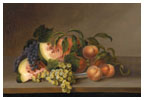 |
“Still Life with Watermelon,” by Rubens Peale, was purchased in John Wilmerding’s honor by former students and friends for the Princeton University Art Museum. (PUAM)
Book awards: Troy Jollimore *99 and Daniel Mendelsohn *94 won 2006 National Book Critics Circle awards on March 8 in New York City. Jollimore, who teaches philosophy at California State University, Chico, won in poetry for Tom Thomson in Purgatory, whose title poem is a sequence of 42 sonnets that explore love, work, time, pain, and sorrow, as experienced by the everyman Tom Thomson. Mendelsohn, a humanities professor at Bard College, won in autobiography for The Lost: A Search for Six of Six Million, a memoir about his great-uncle and aunt, Shmiel and Ester Jäger, and their four daughters, who perished in the Holocaust.
Best young novelists: Gabe Hudson, a Hodder Fellow in the Council of the Humanities and lecturer in the creative writing program, and Jonathan Safran Foer ’99 were named to the literary magazine Granta’s “Best of Young American Novelists” list March 1 in New York. A former rifleman in the Marine reserves, Hudson is the author of Dear Mr. President, a collection of short stories about the Gulf War. His upcoming novel, American Buddha, about a Vietnamese-American Marine Corps rifleman who fights in the Gulf War, will be published in 2008. Foer is the author of the novels Everything is Illuminated and Extremely Loud and Incredibly Close.
Promising photographers:
Works by Eleanor Oakes ’07 and Elizabeth
Looke-Stewart ’06 were selected for inclusion in the publication
25 Under 25: Up-and-Coming American Photographers, to be published
by powerHouse Books and CDS Books in 2008. The book will feature images
that explore the theme “transitions.” Oakes’ photographs
are interiors of an abandoned psychiatric hospital that, she says, “convey
a sense of human presence that still remains within the vacant walls of
the institution.” The photographs by Looke-Stewart are of her four
younger sisters, and explore their relationships and changes from “girlhood
to adolescence,” she says. ![]()
Bob Abernethy ’49 *52 started PBS’s weekly religion news program 10 years ago. (David Holloway) |
Searching
for meaning
Bob Abernethy ’49 *52 talks to people about faith and doubt
As host and executive editor of PBS’s Religion & Ethics NewsWeekly, Bob Abernethy ’49 *52 has talked to hundreds of people over the last 10 years about their faith. Now Abernethy and William Bole, a religion writer, have edited some of those transcripts into a book: The Life of Meaning: Reflections on Faith, Doubt, and Repairing the World, published by Seven Stories Press in May. Represented are a range of voices, from retired Anglican archbishop Desmond Tutu to Rachel Remen, a physician who examines the difference between healing and curing, and Thomas Lynch, a funeral director and poet who talks about the rites of death. Abernethy spoke with PAW’s Katherine Federici Greenwood.
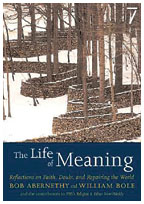 Why
do you like talking with people about the “big questions”?
Why
do you like talking with people about the “big questions”?
So many of the people we talked to had this honest, clear sense that there was something more to reality than the material world and that this was something that they could ground their lives on. ... They don’t pretend that the world is all nice. They recognize the existence of suffering and disappointment and all that, and yet they see also joy and beauty and things like that. They live just as much in the world as any of the rest of us, but they also live in this spiritual dimension.
Which people resonated the most with you?
Rabbi Irving Greenberg is trying to figure out a theology after the Holocaust and an answer to what everybody sooner or later asks: How can an all-powerful God permit terrible things to happen? He wanted to develop a theology that could stand up to the presence of burning children. And then he went on to say that the way out of the dilemma was to imagine a God that was not all-powerful but who was particularly close to us in times of suffering. I also love Thomas Lynch, the poet and undertaker, for many reasons but partly because of his language. Among other things, he said, “Grief is the tax we pay on loving people,” and poetry and funerals pretty much try to do the same thing: They both try to find meaning in the unspeakable.
Many of the people seem to express their search for meaning and for answers to life’s big questions, instead of the answers themselves.
That’s right. One of the lessons is that there are a lot of ways to approach these questions and to approach the holy. I did an interview with Frederick Buechner [’47], a writer and ordained Presbyterian minister, that did not get into the book. He says, “Listen to your life.” What he means is that if you pay attention to what’s going on and what has gone on in the past, you perhaps will see places where God broke into what you were up to or appeared in some way. Another person who says much the same thing is Rachel Remen. She talks about suffering [with Crohn’s disease] and coming to feel that there was something spiritual growing inside of her. Although she didn’t get cured, she had become stronger and a more perceptive person as result of a lifetime with the disease.
The scientists in the book believe in God. Did you ever interview scientists who were not believers?
I’ve also interviewed atheists, and I’ve been impressed
by the recent spate of books by atheists, such as Richard Dawkins’
The God Delusion. Those books in turn challenge a lot of us to re-examine
our own traditions and what we believe and why — that is, whether
God exists, whether there’s any meaning, how you find it, and how
you define it in your life. I think our book has in it things that people
who are looking for answers to the atheists might find interesting. For
example, I loved the line by Francis Collins [the medical doctor and chemist
who directed the Human Genome Project of the National Institutes of Health]
about what a double pleasure it was for him to preside over the process
of unlocking the genetic code, a pleasure both as a scientist and as a
religious believer, because he said he discovered something nobody else
had known before but God.![]()
